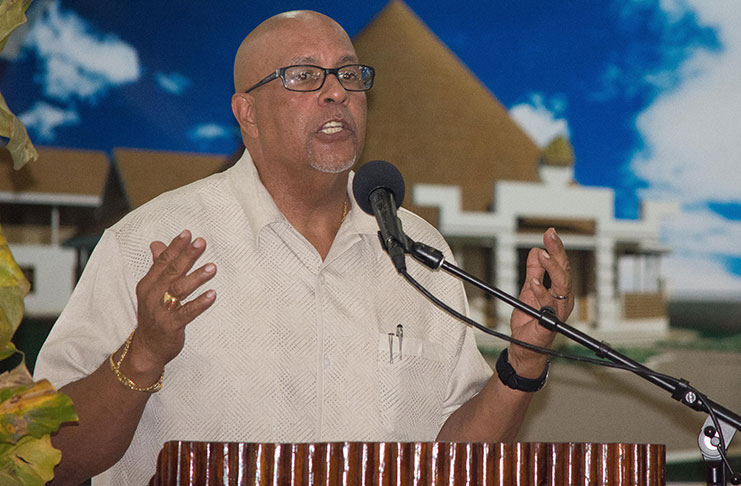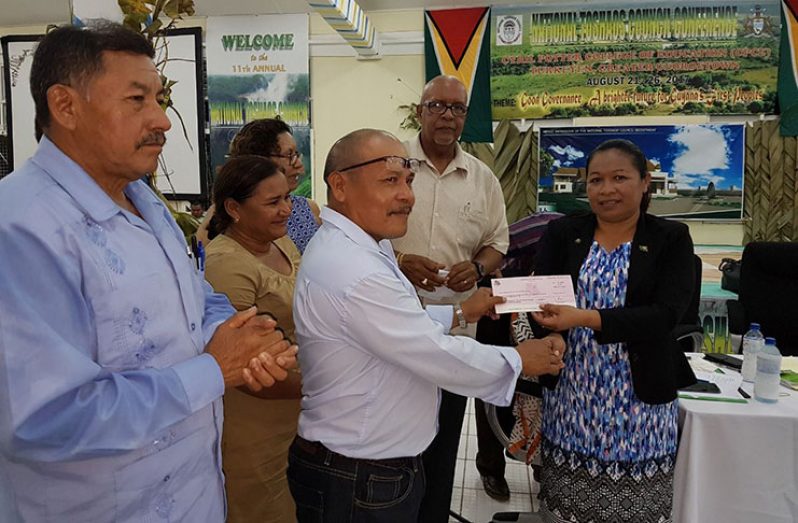–Paramakatoi gets $4.2M to improve service
MABARUMA will, for the first time in history, have access to treated water in a matter of weeks while the construction of a reservoir in the Paramakatoi Village will result in treated water being available there for the first time also.
This was disclosed Thursday by Guyana Water Incorporated (GWI) Managing Director, Dr. Richard Van-West Charles while addressing over 200 Toshaos, Community Development Councillors and Government officials at the just-concluded National Toshaos Council (NTC) Conference at the Cyril Potter College of Education (CPCE).

He explained that GWI, in collaboration with the Guyana Energy Agency (GEA), has captured water from the Hosororo Falls, constructed a reservoir, and is now in the process of completing the pump station and installing the treatment system. The completion of the multimillion-dollar project will see the village of Mabaruma, in Region One (Barima-Waini) benefitting from treated water for the first time.
Over in Region Eight (Potaro-Siparuni) , Dr. Van-West Charles pointed out that through a Memorandum of Understanding (MoU) with the Paramakatoi Village Council, GWI is in the process of constructing a reservoir, which will make treated water available to that hinterland community.
As part of the MoU for the undertaking of the water supply improvement project, GWI handed over a cheque to the village council valued approximately $4.2M. This project will see the villagers executing the works, under the guidance of GWI’s engineers.
“We are now constructing the catchment, storage; we are installing a pumping system and distribution network, standpipes and treatment system at Paramakatoi. So that moves us to a different level of development within that village,” the CEO explained.
The availability of treated water in Hinterland Regions started in Lethem, Region Nine (Upper Takutu-Upper Essequibo) by treating the water which comes from the six wells with chlorine, he posited.
Dr. Van-West Charles disclosed, too, that GWI is also distributing jerry cans and carbon filters to a number of villages across the Hinterland. “It is a special filter which removes all of the bacteria, viruses and fungi from the water so that you can drink it immediately,” he said by way of explaining the function of the filters.
These filters, he said, have been installed at Kamarang Hospital, Kako Primary School, Baracara Primary School and the Mabaruma Hospital among other Interior locations.
GWI has also identified a number of villages in Regions One, Seven,Eight and Nine for the installation of filters, while plans are underway for the establishment of miniature laboratories throughout the Hinterland, so that water can be tested and the results can be shared with villagers.
Dr. Van-West Charles reiterated that it is of utmost importance that schools and health facilities have access to water that is in compliance with World Health Organisation (WHO) standards.
“We are now about to complete our strategic plan, and within the next four years this is our task; to ensure the population has access to potable water, which means water of a good quality in accordance with WHO standards,” he emphasised.
He highlighted that most Interior Regions use surface water but noted that in light of climate change, this cannot be their main source of water access. As a result, GWI has embarked upon drilling wells in various parts of the Hinterland so as to ensure a sustainable source of water supply.
“So we want to ensure that while we have access to the water from surface sources such as creeks, rivers etc., you also will have access to water from ground source….because you know especially in Region Nine what has happened over the past year and how the drought has affected not only human consumption but also your agriculture and economic development”, Dr. Van-West Charles pointed out.
He appealed to the Toshaos to maintain constant contact with GWI as a means of ensuring a sustainable access to water in their regions, even as he disclosed his personal contact information and that of his technical staff.
According to Van-West Charles, the projects and programmes being executed by GWI are aligned with President David Granger’s vision for equity of livelihoods throughout Guyana.




.png)









